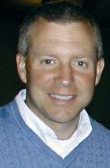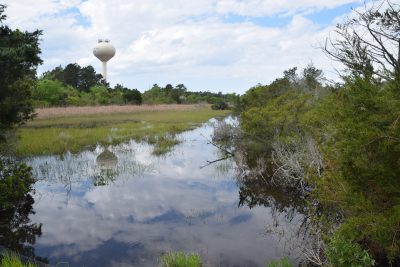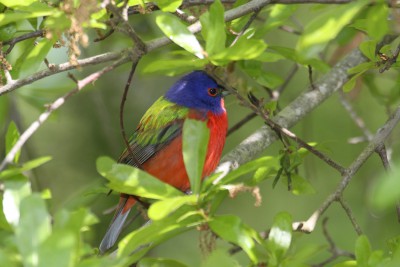EMERALD ISLE – Despite concerns expressed by some environmentalists, residents and an inspector for the North Carolina Natural Heritage Program, Emerald Isle Town Manager Frank Rush says the town can successfully protect water quality, preserve a significant chunk of maritime forest and eventually build athletic fields on a portion of a nearly 30-acre tract officials hope to buy.

The move would preserve the area, which is largely maritime forest, behind the town’s recreation center on Emerald Drive from residential development, but a state report based on a site inspection on April 12 calls the town’s plan for carving out the forest’s interior for ball fields, “a significant concern.”
Supporter Spotlight
Town commissioners, during their monthly meeting on April 11, voted unanimously to seek two grants and money from the Marine Corps, augmented by some tax money, to buy the $3 million property, the largest undeveloped tract in town. Commissioners also gave Town Manager Frank Rush the OK to apply for $545,000 from the state Clean Water Management Trust Fund, which awards grants for projects that protect or enhance water quality.
The plan is to preserve about 20 acres in its natural state, but with hiking trails and other opportunities for passive recreation, and to use nine to 10 acres for athletic fields, which have long been desired by town residents.
The land is owned by Surfside Realty Inc. and was platted for a subdivision back in 1989, but it was never built.
The property is bounded by Archers Creek to the south, which separates it from the town government complex; by residential units along Live Oak Street to the west; residential units along Sound Drive to the north; and residential units along Archers Creek Court and Coral Court to the east.
‘A Serious Loss’
Mike Schafale of the Natural Heritage Program did the inspection on April 12, in response to the town’s application for the Clean Water grant, and noted in his report the town’s contention that, “If unprotected, it appears likely to be bought for residential development soon.” However, he also noted that, “The town’s proposal to retain nine acres of the tract for recreational development would also be a serious threat to the natural integrity of the site, given the small size of the site.
Supporter Spotlight
“Though development in the wetlands would be unacceptable, and protection of them is needed to protect the creek, the most significant feature of the site is the maritime forest,” Schafale added. “At 23 acres, it is a small example, but it is one of the few last remnants of the extensive forest that once covered the interior of Emerald Isle, and is one of the better remnants in this region of the coast.”
Schafale said the clearing of nine acres would be “a serious loss,” and if recreational development were to occur in the middle of the site, “it would destroy virtually all of its ecological value.” Development along the edge of the property, adjacent to neighboring houses, would be less destructive, but would still diminish the natural area’s significance.
“The town is encouraged to use the land as a natural recreation area, with trails and small parking lots, but without facilities that would require large clearings or remove any of the intact maritime forest or wetlands,” Schafale noted.
‘Balancing Act’
Rush, the town manager, said the very nature of the Clean Water grant the town seeks demonstrates intent to preserve the land and protect water quality. It’s the same funding source used for the town’s purchase of the Emerald Isle Woods land off Coast Guard Road.

In addition, the town board authorized Rush to apply for $500,000 from the state Parks and Recreation Trust Fund, and officials also are seeking $1.5 million from the federal government through Marine Corps Air Station Cherry Point.
The air station request, Rush said, is feasible because the property is in the flight path for aircraft that use Bogue Field, an auxiliary landing strip across Bogue Sound in the town of Bogue. The military discourages development within the flight paths of its facilities, and often partners with local governments to minimize it.
The final piece of the funding puzzle would be $455,000 from town taxpayers, most likely through a short-term loan, either internal or external. That wouldn’t happen until fiscal 2018-19, which will begin on July 1, 2018.
That taxpayer funding, Rush said, is an important consideration in how the property eventually is used, as residents and property owners will “have an investment,” and have long indicated in land-use plans and surveys that they’d like to see some kind of athletic fields in town. The site is about the only place that can happen, and it’s also within a stone’s throw of the recreation center.
“It’s a bit of a balancing act,” the manager said, but it’s important for all involved to remember that it’s also about saving about 30 acres, minus wetlands, from potentially intense development.”
Schafale reported that mid-Atlantic maritime evergreen forest occupies all of the upland parts of the site, with a canopy dominated by loblolly pine and laurel oak, with smaller numbers of live oaks and a few large pignut hickory trees. The understory includes swamp red bay, American olive and Carolina laurel cherry. Yaupon holly and witch hazel are also present, with plenty of poison ivy, greenbriers and Virginia creeper.
“The forest is mature, though it shows the effects of intense hurricanes about 20 years ago,” he wrote. “The old canopy trees are interspersed with gaps of up to an acre or two where understory-size trees predominate.”
Much of the marsh on the site is freshwater, but salt marsh is present along the Archer Creek channel where viewed from Lee Avenue, and a small amount may be present in the tract.

“Archers Creek presumably is tidally influenced, though the vegetation along it in most of the site suggests fresh water,” Schafale added in his report. “Saltier water appears to extend beyond Lee (Avenue), but not to the middle of this tract.”
Water Quality, Habitat Loss
Larry Baldwin, the Crystal Coast Waterkeeper based in Morehead City, said he supports the purchase because the land is zoned for multifamily development and could be used for up to 237 condominium units. That’s eight units per acre allowed under town zoning rules.
Baldwin, whose group is licensed by the international Waterkeeper Alliance, said he supports what the town is doing, “for now,” because it’s important that the tract not be used for dense condominium development, which would result in streets, roofs, sidewalks and other impervious surfaces that would increase stormwater runoff, the primary cause of water pollution along the coast.
“I’m not familiar enough with what they (the town) are doing to oppose anything yet,” Baldwin added. “But I do hope that they will do the right thing, which would be to preserve the whole 30 acres. I’m going to be interested in seeing what they eventually propose to do.”
One important factor, Baldwin noted, would be the location of the ball fields within the tract; the distance from the wetlands and the creek is crucial.
Rush said the town has always tried to be a good environmental steward. He said the roughly four acres of wetlands on the site would be protected.
“I absolutely think that we could,” Rush said, when asked if he believes the town could design a project for athletic fields that would not hurt water quality. The bulk of the property is high and sandy, he said, whatever the town eventually designs would include buffers. In fact, Rush said he expects the Clean Water Management Trust Fund will require a conservation easement on a portion of the property, primarily along the roughly 1,100-foot shoreline of Archers Creek.
Sam Bland, a town resident, former Hammocks Beach State Park superintendent and North Carolina Coastal Federation employee, said he supports the town acquiring the property, but not the concept of developing nine acres for ball fields or other active park uses.
The problem, Bland said, is that there is very little maritime forest left in Emerald Isle. The other large section is the 41-acre, town-owned Emerald Isle Woods, which is a combination natural park and storm water management facility.
“We need to preserve what’s left,” Bland said. He added that clearing and developing any of the property would likely have some negative effect on water quality in the creek, which flows into Bogue Sound.

Another issue, Bland said, is that the property is prime habitat for wildlife, including raccoons, foxes and especially the resplendent painted bunting, which, in North Carolina, is listed as a federal “special concern” species by the U.S. Fish and Wildlife Service. The bird also has been designated as a watch list species by Partners in Flight, and BirdLife International has categorized the population as near-threatened. Experts say the population has been declining for years, in part because it is caught in Mexico and Cuba for the caged-bird trade, but also because its habitat is shrinking.
In his report, Schafale stated that a survey for rare animals and for rare bryophytes – liverworts, hornworts and mosses – “would be worthwhile.”
Closing the Deal
In action at the April 11 meeting, the board authorized Rush to execute a contract for purchase and also set up a “due diligence period” that could result in a closing of the deal at the end of October.
MCAS Cherry Point officials have begun the process to secure federal funds, Rush said, but that’s likely to take several months.
Rush said that based on discussions with officials at Cherry Point, he expects a definitive commitment by September, but the money might not be available for a few months after that. Decisions on the state trust fund grants could also come by early September.
If the state grants come through, but actual cash from the military is not available by the planned Oct. 31 closing date, Rush added, the town could enter into a short-term financing arrangement with The Conservation Fund of North Carolina, part of a national organization whose mission is to assist communities in the acquisition and conservation of public land. The Conservation Fund is serving as the town’s partner on the acquisition. Under the military’s program, Rush said, Cherry Point can provide federal funding only to previously authorized partners, and The Conservation Fund has been involved in similar previous deals with the air station.
The Conservation Fund would be the actual entity that would purchase the property from the owners. The Conservation Fund would then convey the property to the town.
In his memo to the board, Rush noted that if the town does not receive adequate funds for the purchase, “it will likely be possible to have The Conservation Fund proceed with the acquisition on the Town’s behalf. The Conservation Fund would provide the balance of funding necessary to acquire the property, and would then hold the property for some mutually agreeable time period.”
If that were to occur, he wrote, “The town would remain eligible for grant funding, and could apply for funding from the same grant programs in 2018 or could apply for funding through other eligible grant programs.”
The other option, absent sufficient funds by closing, is to simply abandon the effort, he added.
What Kind of Park?
Rush said he’s confident the town can get the two grants, as well as the contribution from the military, but more money would be needed to build athletic fields.
In a memo to commissioners for their meeting, Rush listed potential field uses and sizes:
- Baseball field – about 400 feet by 400 feet, or three to four acres.
- Soccer field – about 300 feet by 400 feet, or nearly three acres, which could potentially be built in the outfield of a new baseball field.
- Tennis court – about 60 feet by 120 feet each; or about one-sixth of an acre.
- Dog park – sizes vary, but likely about an acre, potentially in the natural area of the new park, among existing trees.
- Skate park – sizes vary, but likely a half-acre or less.
- Splash park – sizes vary, but likely one-fourth of acre or less.
“Additionally,” Rush wrote, “it will likely be necessary to provide some amount of additional parking for park patrons.” He said about 80 spaces, along with access to them, would take up close to an acre.
The military’s program will limit the extent of building construction on the property.
Rush noted in his memo to the board the town would likely be able to build a small bathroom building, a storage building, a concession building and “other similar features,” but larger buildings would not be allowed.
Eight or nine residents spoke during the state grant-required public hearing on April 11, and while some expressed concern, none out-and-out opposed the plan.
Ken Stone, chairman of the town’s bicycle and pedestrian advisory committee, was one who spoke at the hearing.
In an interview, Stone said that, like others, he’d prefer that the property be kept mostly natural, with the exception of hiking and bike paths and maybe a small venue for outdoor performing arts.
But, he added, “We have to get the property first. And there are a lot of people who have been interested in having ball fields.” But, he said, protecting 20 of the 30 acres of mostly forested land in a natural state is certainly preferable to 237 condos or even single-family development.
“I guess I’m kind a realist,” Stone said. “If we have a chance to get this land, using grants, and don’t do it, that would be a heck of a missed opportunity.”
Rush said that if the town is able to get the land, nothing would happen fast.
“Ultimately, I would envision the board soliciting additional public input on desired park amenities in the future, and using that public input to develop a specific park plan,” he said.







